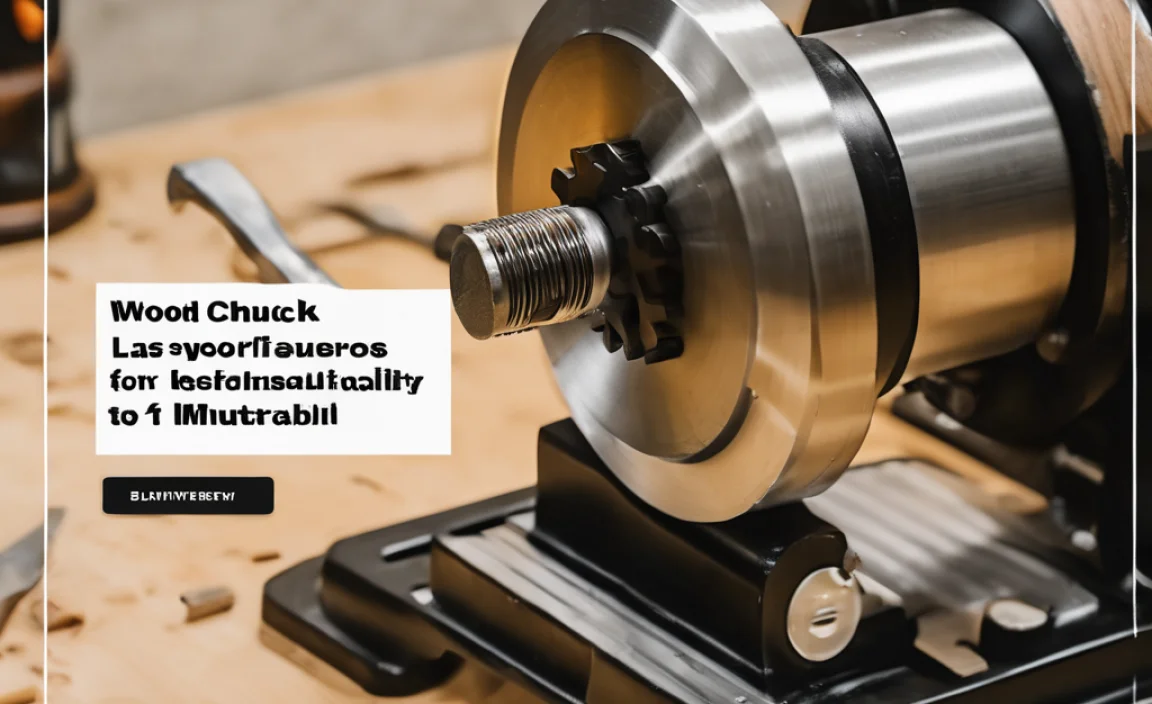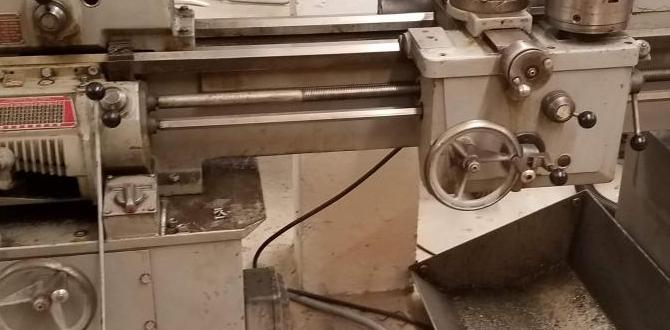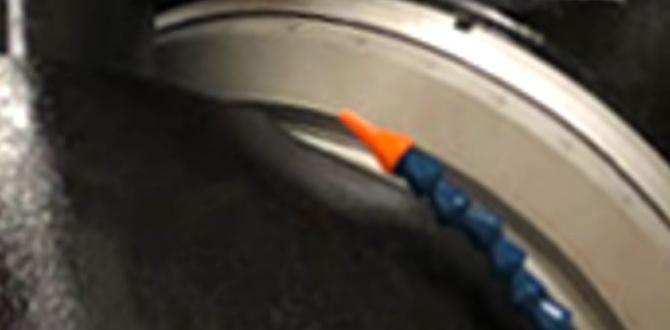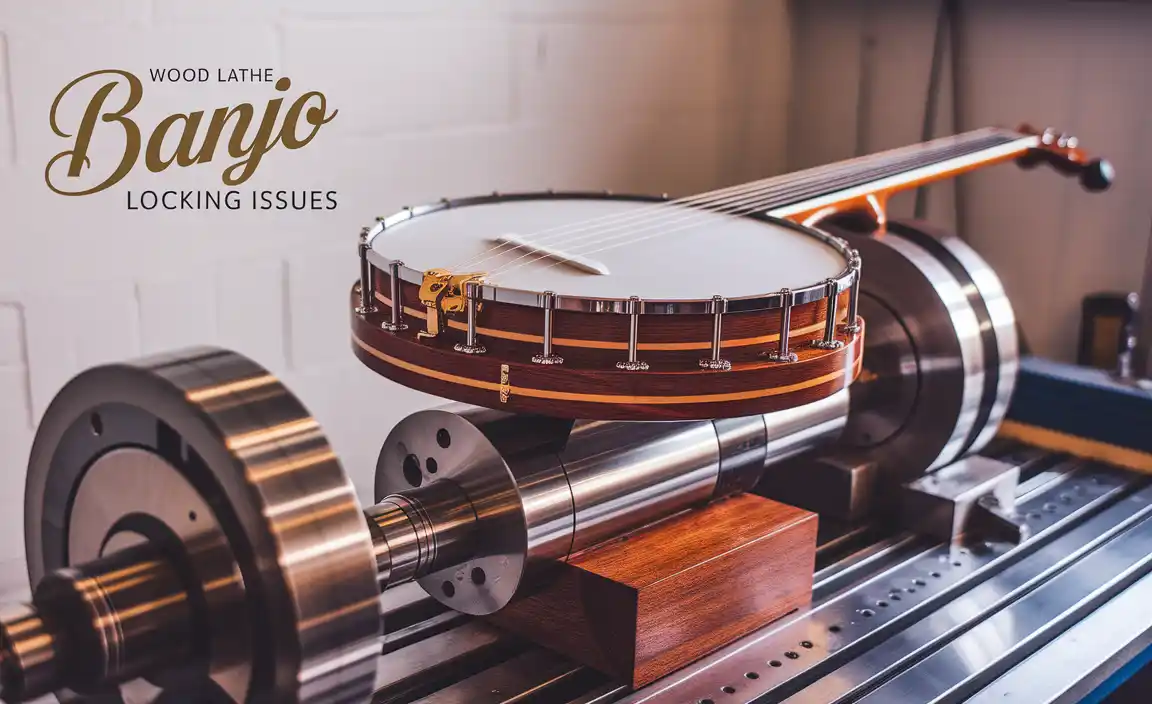Carbide end mills with a 1/8″ diameter and 1/4″ shank, especially stub length variations, are your go-to for clean, precise cuts in fiberglass. This guide helps you choose and use them effectively to avoid common frustrations and achieve professional results.
Working with fiberglass can be a rewarding experience, allowing you to create durable and lightweight parts for many projects. However, it can also be a tricky material to machine, often leading to messy edges, delamination, and tool breakage if you’re not using the right tools. One of the most common headaches for beginners is figuring out the best cutter for the job. That’s where the humble yet mighty 1/8″ carbide end mill, particularly in its stub length form, comes into its own. This guide is designed to demystify its use, ensuring you get clean, precise cuts every time without the frustration. We’ll walk through why this specific tool is so important for fiberglass and how to use it like a pro.
Why the 1/8″ Carbide End Mill is a Fiberglass Hero
Fiberglass, a composite material made of glass fibers embedded in a resin matrix, presents unique machining challenges. It’s abrasive, prone to chipping, and can heat up quickly, all of which can put a strain on your cutting tools. This is precisely why a specialized tool like a 1/8″ carbide end mill is so effective:
Carbide is King: Carbide is significantly harder and more wear-resistant than High-Speed Steel (HSS), making it ideal for abrasive materials like fiberglass. It can withstand the heat generated during cutting and maintain its sharp edge for longer.
1/8″ Diameter for Detail: A 1/8″ diameter is small enough to allow for intricate detailing and tight cornering, which is often crucial when working with fiberglass for models, custom parts, or enclosures. It also doesn’t remove material too aggressively, giving you better control.
Stub Length Advantage: This is where things get interesting for fiberglass. A “stub length” end mill is shorter overall than a standard end mill. For a 1/8″ diameter, a stub length typically means the flute length (the cutting part) is also reduced, usually to around 1/4″ to 3/8. This shorter flute length significantly increases rigidity. Less tool overhang means less chatter, less vibration, and a dramatically reduced risk of tool breakage – all critical when cutting brittle fiberglass. This enhanced rigidity helps achieve a cleaner cut with minimal delamination or chipping, which is a common problem when milling fiberglass.
Low Runout is Essential: “Low runout” refers to how accurately the cutting edge spins around the center axis of the tool. High runout means the tool wobbles, leading to uneven cuts, increased tool wear, and potential part inaccuracies. For fiberglass, maintaining a precise cut is paramount, so choosing end mills specifically advertised as having low runout is a significant advantage.
Understanding End Mill Specifications
When you start looking for these tools, you’ll see a few key numbers. Let’s break them down so you know exactly what you’re getting:
Diameter: This is the width of the cutting head. For this article, we’re focusing on 1/8 inch (0.125 inches).
Shank Diameter: This is the part that goes into your collet or tool holder. The most common shank diameter for a 1/8″ end mill is 1/4 inch. This ensures it fits in standard milling machine collets.
Flute Count: This refers to the number of cutting edges (helical grooves) on the end mill.
2 Flutes: Generally preferred for plastics and composites like fiberglass. They offer better chip clearance, which is important for preventing heat buildup and clogging in fibrous materials.
4 Flutes: Designed for harder metals and general-purpose milling. While they can cut fiberglass, they may create more heat and clog up faster due to poorer chip evacuation in this specific material. Stick with 2-flute for best results in fiberglass.
Flute Length / Overall Length (Stub vs. Standard):
Standard Length: Has a longer flute section extending further up the tool shank.
Stub Length: Has a shorter flute section. As mentioned, this provides much greater rigidity and reduces the risk of deflection and breakage, making it superior for milling brittle materials like fiberglass.
Choosing the Right Carbide End Mill for Fiberglass
Not all 1/8″ carbide end mills are created equal, especially when it comes to fiberglass. Here’s what to look for:
Material and Coating
Solid Carbide: Always opt for solid carbide for fiberglass. It’s the hardest and most heat-resistant option.
Uncoated: For fiberglass, an uncoated solid carbide end mill is often the best choice. Coatings can sometimes be brittle or react negatively with the resin in fiberglass, causing premature wear. Uncoated carbide offers a good balance of hardness and resistance to chemical interaction. If you do see coated options, look for specialized coatings designed for composites, but uncoated is generally simpler and more reliable for beginners.
Geometry Matters
2 Flutes: As discussed, the 2-flute design is ideal for fiberglass. It allows for better chip ejection, which helps keep the tool from overheating and the workpiece from getting clogged with fiberglass dust. This is crucial for a clean cut and preventing tool damage.
Up-Cut vs. Down-Cut vs. Straight Flutes:
Up-Cut: These flutes spiral upwards. They are good for clearing chips efficiently but can sometimes lift the material, potentially causing chipping on the top surface of thin fiberglass.
Down-Cut: These flutes spiral downwards. They push chips away from the top surface, leading to a cleaner finish on top but can pack chips at the bottom of the cut.
Straight Flutes: Less common in carbide end mills for this purpose but offer neutral chip evacuation.
Compression Flutes: These combine up-cut and down-cut features. They are excellent for achieving a clean finish on both the top and bottom surfaces of thin materials by pushing chips away from both. If you can find a 1/8″ carbide end mill specifically designed for composites with a compression or optimized up/down cut geometry, it can be a fantastic choice. However, a standard 2-flute up-cut end mill is a very capable and commonly available option.
Stub Length and Rigidity
When milling fiberglass, the shorter, the better when it comes to tool rigidity. A stub length end mill has a shorter flute length and projection from the collet. This dramatically reduces the likelihood of the tool deflecting or vibrating during the cut, which is essential for preventing chipping and achieving a smooth finish. Look for end mills that are explicitly listed as “stub” or have a noticeably short flute length relative to their overall size.
Low Runout Design
A low runout tool is manufactured to very tight tolerances, meaning it spins very true. This is critical for achieving precise cuts and extending tool life. A tool with high runout will essentially wobble, leading to a rougher cut, increased stress on the cutting edges, and a higher chance of chipping the fiberglass. Look for reputable manufacturers that specify “low runout” or tight runout tolerances, often measured in tenths of a thousandth of an inch.
Manufacturer Recommendations
Some tool manufacturers offer end mills specifically designed for composites and plastics. These often feature geometries and carbide grades optimized for materials like fiberglass. While you can certainly use a good quality, general-purpose 2-flute solid carbide stub length end mill, exploring options from brands known for their composite tooling can yield excellent results. For a comprehensive list of tooling standards, consult resources from organizations like the National Machinery Institute which promotes standards in machining.
Essential Safety Precautions for Milling Fiberglass
Working with fiberglass creates fine dust, which can be harmful if inhaled and can cause skin irritation. Always prioritize safety:
Personal Protective Equipment (PPE):
Safety Glasses: Absolutely non-negotiable. Fiberglass dust and chips can cause serious eye injury. Wrap-around styles offer better protection.
Respirator: A proper respirator (N95 or higher) is essential to protect your lungs from fine fiberglass particles.
Gloves: Wear gloves to prevent skin irritation from fiberglass dust.
Long Sleeves: Protect your skin from dust.
Dust Collection:
Vacuum System: Connect a shop vacuum directly to your milling machine’s dust port, if available, or set up a vacuum to capture dust at the source. This significantly reduces airborne dust.
Enclosure: If possible, enclose your milling operation to contain the dust.
Machine Safety:
Secure Workpiece: Ensure your fiberglass workpiece is securely clamped to the milling table. Use appropriate clamps and vices.
Tool Guarding: Make sure all machine guarding is in place and functioning correctly.
Clear the Area: Keep your work area clean and free of clutter.
Fire Hazard: Fiberglass dust, like many fine organic dusts, can be combustible. Avoid open flames or sparks near the milling area.
Setting Up Your Mill for Fiberglass
Getting the right settings is crucial for a good finish and tool longevity. Here’s a general guide, but always start conservatively and adjust as needed.
Workpiece Clamping
Fiberglass can be prone to lifting or moving if not clamped securely. Use clamps or a vice that distributes pressure evenly. Avoid clamping directly on edges where chipping is most likely. Double-sided tape (like VHB tape) can sometimes be used in conjunction with clamps for extra hold, especially on thin parts, but ensure it’s strong enough for the cutting forces.
Spindle Speed and Feed Rate
These are the two most critical parameters. Too fast a spindle speed or too slow a feed rate will generate excessive heat, melting the resin and dulling the end mill. Too fast a feed rate can cause chipping and break the tool.
Spindle Speed (RPM): For a 1/8″ carbide end mill in fiberglass, a good starting point is often between 10,000 – 20,000 RPM. Higher speeds are generally better for composites with carbide, as they allow for rapid chip formation.
Feed Rate (IPM – Inches Per Minute): This is directly related to RPM and the number of flutes. A general rule of thumb is to aim for a chip load of 0.001″ to 0.004″ per flute for plastics and composites.
`Feed Rate (IPM) = Spindle Speed (RPM) Number of Flutes Chip Load (inches/flute)`
For example, at 15,000 RPM, with a 2-flute end mill and a 0.002″ chip load: `15000 2 0.002 = 60 IPM`.
Start on the lower end of the feed rate and increase gradually if the cut is clean and chips are forming nicely.
Depth of Cut (DOC)
Stepover: This is the distance the tool moves sideways for each pass. A typical stepover for finishing might be 5-10% of the tool diameter (0.005″ – 0.010″). For roughing, you might go higher.
Stepdown: This is how deep you cut vertically in one pass. It’s critical to keep this shallow when milling fiberglass, especially with a stub length end mill. A good starting point is 0.010″ to 0.030″. Thicker fiberglass may allow for slightly deeper cuts, but always start shallow to avoid chipping and tool breakage.
Climb Milling vs. Conventional Milling
Climb Milling: The tool rotates in the same direction as the feed. This generally results in a cleaner finish, less force on the workpiece, and longer tool life. This is typically the preferred method for fiberglass and plastics.
Conventional Milling: The tool rotates against the direction of the feed. This creates more force and can be harder on the tool and workpiece, often leading to chipping.
For fiberglass, always try to use climb milling. Ensure your machine has minimal backlash in the ball screws for climb milling to work effectively.
Basic Milling Techniques for Fiberglass
Here’s a step-by-step approach to milling fiberglass with your 1/8″ stub length carbide end mill.
Preparation
1. Design Your Part: Create your design in CAD software. Ensure you have accounted for tool radius and clearances.
2. Generate Toolpaths: In your CAM software, set up a 2D contour or pocket operation.
Select your 1/8″ 2-flute stub length carbide end mill.
Crucially, set your cut direction to “Climb”.
Input your spindle speed, feed rate, depth of cut, and stepover values (start conservatively as per the previous section).
For pocketing, consider using a “3D Adaptive” or “High-Efficiency Toolpath” type operation if available, as these maintain a more constant chip load, reducing stress on the tool.
3. Secure Workpiece: Clamp your fiberglass sheet firmly to the milling machine bed or in a vice.
4. Set Work Zero: Carefully set your X, Y, and Z zero points on the workpiece using your chosen method (edge finder, probe, or manual touch-off). Ensure your Z zero is set to the top surface of the fiberglass.
5. Tool Height Offset: Load your tool into the spindle and set the Z-axis height offset accurately.
The Cut
1. Dry Run (Optional but Recommended): If your CNC controller allows, perform a dry run (without the tool cutting the material) to visually check the toolpath and ensure no collisions will occur.
2. Engage Spindle & Dust Collection: Turn on your spindle at the programmed RPM and start your dust collection system.
3. Start the Program: Begin the milling process.
4. Monitor the Cut: Watch and listen closely.
Listen for Smoothness: The cut should sound smooth, with consistent chip formation.
Observe Chip Evacuation: Ensure chips are being cleared effectively and not building up around the tool.
Look for Smoke or Melting: If you see smoke or signs of melting, your feed rate is likely too slow, or your spindle speed is too high. Pause the machine and adjust your feed rate upwards slightly.
Check for Vibration/Chatter: If you hear chatter, try a slightly slower feed rate, a shallower depth of cut, or ensure your workpiece and tooling are very rigid.
5. Multiple Passes: For thicker materials, the CAM software will automatically create multiple passes (stepdowns). Allow the machine to complete each pass.
6. Finishing Pass: Sometimes, a final shallow “finishing pass” with a very small stepover (e.g., 0.005″) can improve surface quality. This is done after the main cutting is complete, using the same tool.
Post-Processing
1. Clean Up: Once the milling is complete, remove the workpiece from the machine.
2. Deburr (if necessary): While a good cut should minimize this, you may find very small burrs or sharp edges. These can often be gently removed with a small deburring tool or fine-grit sandpaper.
3. Wash Part: Wash the part thoroughly with soap and water to remove any residual fiberglass dust.
Common Problems and Solutions
Even with the right tool, you might encounter issues. Here’s how to troubleshoot:
| Problem | Cause | Solution |
| :————————– | :——————————————————————————————– | :————————————————————————————————————————————————————————————————————– |
| Chipping/Delamination | Feed rate too high, spindle speed too low, dull tool, excessive tool overhang, wrong tool type. | Reduce feed rate, increase spindle speed, use a sharper tool, use a stub length end mill, ensure 2 flutes. Check for workpiece clamping issues. Try a down-cut or compression end mill for top surface finish. |
| Melting/Gumming Up | Feed rate too low, spindle speed too high, insufficient cooling (if used), dull tool. | Increase feed rate, decrease spindle speed. Ensure proper chip evacuation. Use a sharper tool. For extensive work, consider a mist coolant or compressed air directed at the cutting zone. |
| Tool Breakage | Excessive depth of cut, feed rate too high, tool deflection (long/flexible tool), crash. | Significantly reduce






